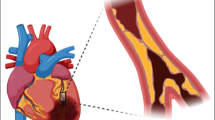Abstract
We studied nonlinear dynamics underlying spontaneous rhythmical contractions of isolated rat portal vein. The signals were acquired at four different temperatures important in isolated blood vessels preparations: 4, 22, 37 and 40°C. To characterize the system’s nonlinearity, we calculated the largest Lyapunov exponent, sample entropy and scaling exponents. Evidence for nonlinearity was provided by analysis of surrogate data generated from the phase-randomized Fourier transform of the original sequences. Positive values of the largest Lyapunov exponent were obtained for the time series recorded under applied conditions, indicating that the system preserves its chaotic deterministic nature even far from the physiological temperature range. Scaling exponents revealed three distinctive regions with different correlation properties. The calculated measures that characterize the time series obtained at 4°C were significantly different from those derived from data obtained at higher temperatures. System’s dynamics becomes more complex or less predictable as temperature approaches physiological value. The computation of the largest Lyapunov exponent, sample entropy and correlation measures gave an insight into the complex dynamics of the isolated blood vessels rhythmicity. We identified different modes of rhythmical contractions of isolated rat portal vein which could improve understanding of possible control mechanisms in vivo.






Similar content being viewed by others
References
Cao L (1997) Practical method for determining the minimum embedding dimension of a scalar time series. Phys D 110:43–50
Eckmann JP, Ruelle D (1985) Ergodic theory of chaos, strange attractors. Rev Modern Phys 57(3):617–656
Eckmann JP, Ruelle D (1992) Fundamental limitations for estimating dimensions and Lyapunov exponents in dynamical systems. Phys D 56:185–187
Edwards DH, Griffith TM (1997) Entrained ion transport systems generate the membrane component of chaotic agonist-induced vasomotion. Am J Physiol 273(2 Pt 2):H909–H920
Fraser AM, Swinney HL (1986) Independent coordinates for strange attractors from mutual information. Phys Rev A 33:1134–1140
Griffith TM (1996) Temporal chaos in microcirculation. Cardiovasc Res 31:342–358
Gustafsson H (1993) Vasomotion and underlying mechanisms in small arteries. An in vitro study of rat blood vessels. Acta Physiol Scand 614:1–44
He GW, Angus JA, Rosenfeldt FL (1988) Reactivity of the canine isolated internal mammary artery, saphenous vein, and coronary artery to constrictor and dilator substances: relevance to coronary bypass graft surgery. J Cardiovasc Pharmacol 12:12–22
Hinghofer-Szalkay H, Kenner T, Estelberger W (1976) Spectral analysis of spontaneous contraction of the isolated portal vein of rats. Pflug Arch 364:157–160
Holman ME, McLean A (1967) The innervation of sheep mesenteric veins. J Physiol 190(1):55–69
Holman ME, Kasby CB, Suthers MB, Wilson JA (1968) Some properties of the smooth muscle of rabbit portal vein. J Physiol 196(1):111–132
Kennel MB, Brown R, Abarbanel HD (1992) Determining embedding dimension for phase-space reconstruction using a geometrical construction. Phys Rev A 45(6):3403–3411
Lin CF, Chung CH, Lin JH (2009) A chaos-based visual encryption mechanisms for clinical EEG signals. Med Biol Eng Comput 47(7):757–762
Meyer C, de Vries G, Davidge ST, Mayes DC (2002) Reassessing the mathematical modeling of the contribution of vasomotion to vascular resistance. J Appl Physiol 92(2):888–889
Parthimos D, Edwards DH, Griffith TM (1996) Comparisons of chaotic and sinusoidal vasomotion in the regulation of microvascular flow. Cardiovasc Res 31:388–399
Parthimos D, Edwards DH, Griffith TM (2003) Shil’nikov homoclinic chaos is intimately to type-III intermittency in isolated rabbit arteries: role of nitric oxide. Phys Rev E 67:051922
Peng CK, Havlin S, Stanley HE, Goldberger AL (1995) Quantification of scaling exponents and crossover phenomena in nonstationary heartbeat time series. Chaos 5(1):82–87
Pincus SM (1991) Approximate entropy as a measure of system complexity. Proc Natl Acad Sci USA 88:2297–2301
Richman JS, Moorman JR (2000) Physiological time-series analysis using approximate entropy and sample entropy. Am J Physiol Heart Circ Physiol 278(6):H2039–H2049
Rosenstein TM, Collins JJ, de Luca JC (1993) A practical method for calculating larges Lyapunov exponents from small data sets. Phys D 65:117–134
Shusterman V, Anderson KP, Barnea O (1997) Spontaneous skin temperature oscillations in normal human subjects. Am J Physiol 273:R1173–R1181
Solber S, Larsen T, Jorgensen L, Sorlie D (1987) Cold-induced endothelial cell detachment in human saphenous vein grafts. J Cardiovasc Surg 28:571–575
Spencer NJ, Greenwood IA (2003) Characterization of properties underlying rhythmicity in mouse portal vein. Autonom Neurosci 104:73–82
Stergiopulos N, Porret C-A, De Brouwer S, Meister JJ (1998) Arterial vasomotion: effect of flow and evidence of nonlinear dynamics. Am J Physiol 274:H1858–H1864
Takens F (1981) Detecting strange attractors in turbulence. In: Rand DA, Young LS (eds) Lecture Notes in Mathematics. Springer, Berlin, pp 366–381
Theiler J, Eubank S, Longtin A, Galdrikian B, Farmer J (1992) Testing for nonlinearity in time series: the method of surrogate data. Phys D 58:77–94
Trzeicaikowski J, Chilian WM (2008) Chaotic behaviour of the coronary circulation. Med Biol Eng Comput 46:433–442
Acknowledgment
The authors would like to thank Ms Milena Zabunović and Ms Dragana Protić for their devoted and thorough work in execution of the experiments. The work is supported by the Karl and Lore Klein-Foundation and Serbian Ministry of Science and Technological Development (grant 141042 and TP20027).
Author information
Authors and Affiliations
Corresponding author
Rights and permissions
About this article
Cite this article
Vuksanović, V., Gal, V., Platiša, M.M. et al. Spontaneous contractions of isolated rat portal vein under temperature perturbations. Med Biol Eng Comput 48, 887–894 (2010). https://doi.org/10.1007/s11517-010-0643-9
Received:
Accepted:
Published:
Issue Date:
DOI: https://doi.org/10.1007/s11517-010-0643-9




